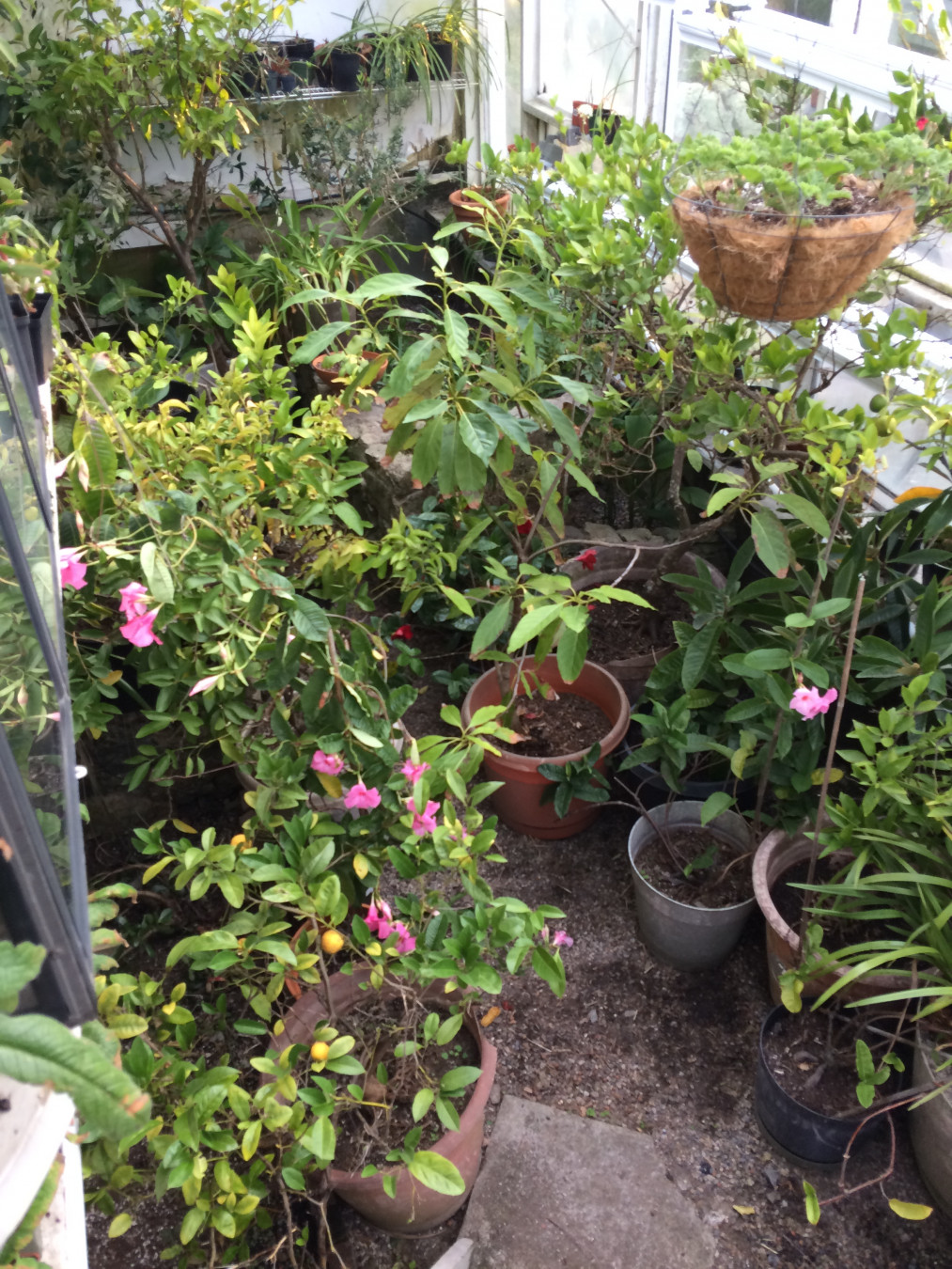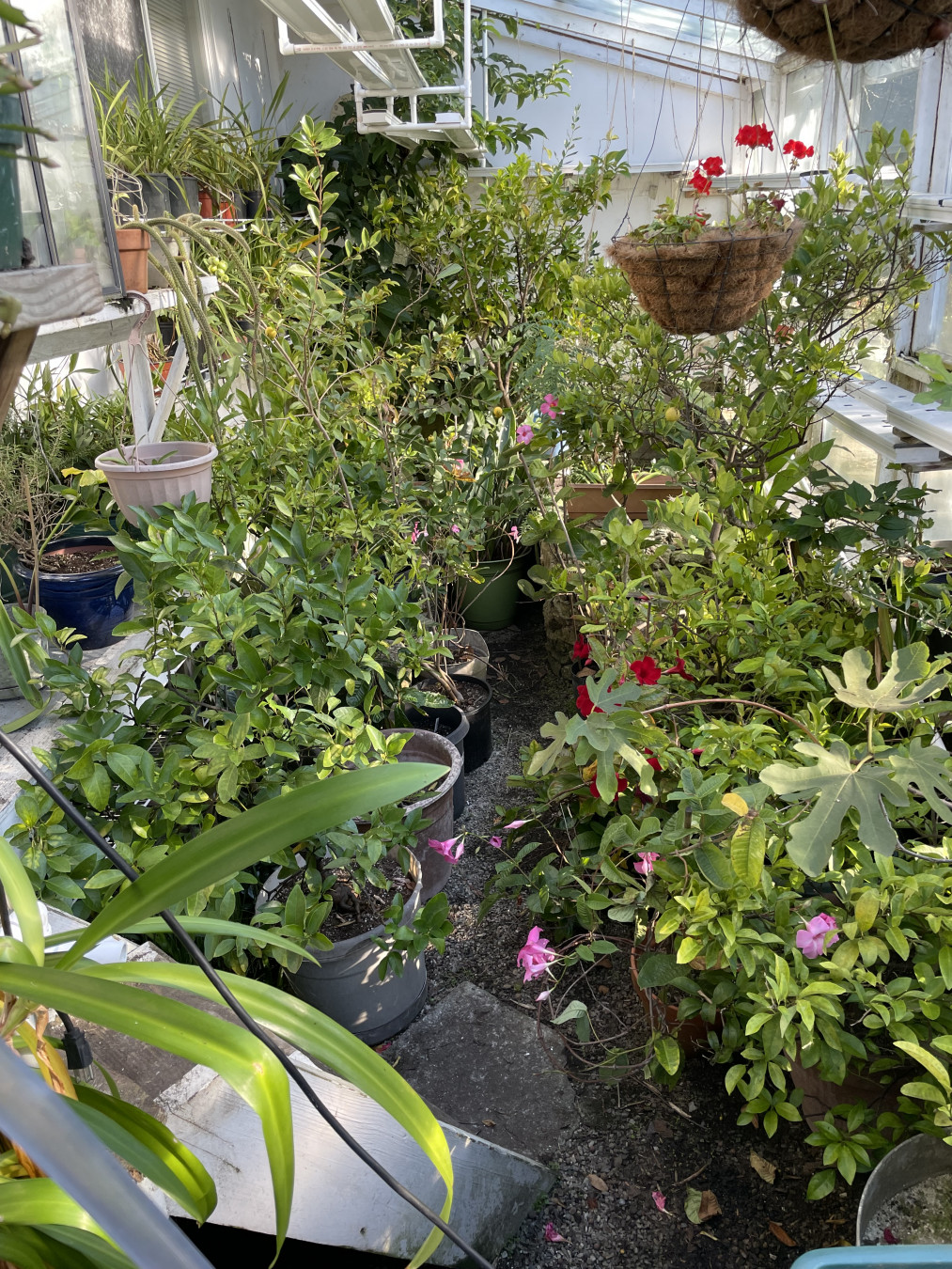
This year my wood-framed greenhouse needed repairs after several big storms, including a hurricane, as well as 40 years of constant use. It leaked and required some serious attention. In fact, in one area the wood had rotted to such an extent that I could push a finger through it. This highlights the problems with wood-framed greenhouses. (Hartley greenhouses are all metal-framed.) And repairing this greenhouse wasn’t easy. The job was made harder when I managed to put a foot through a top window. Fortunately, I didn’t cut myself, but I had to order new glass.
With the repairs completed, I began to move back into this greenhouse all the cold-sensitive plants I had put outdoors for the summer. These plants fit in the greenhouse last spring, but this fall they no longer did. Many had grown significantly, and many had also been repotted. Unfortunately, repotting a large plant into an even bigger pot doesn’t solve space problems, nor does dividing plants and ending up with even more pots. Dividing the four Cymbidium orchids I started with eight years ago, has given me nineteen plants, all in their own pots and all taking up shelf space. My Cape Primrose (Streptocarpus) plants have been divided so many times that instead of six or eight plants, I now have twenty-eight in addition to giving many away. The Agapanthus plants that have been in my outdoor garden since spring, must also go inside for the winter. Originally, I had four plants; now there are twenty-six. All this creates a dilemma: What to do with the extra plants? There are only so many friends to give plants to, and the local garden club won’t have a plant sale until next spring.

Somehow, after a lot of juggling and some serious pruning, I managed to get all the plants inside, but the process was rather like stuffing a Thanksgiving turkey. Although the plants were sprayed outdoors to minimize insect infestations, they seem much too close together to help keep insects from spreading. What’s more, the normally wide path through the greenhouse has been reduced to about a twelve-inch width, making it awkward to move past all the foliage. There is still a space for the heater, but it’s quite close to a few plants, which creates another concern. To help with watering in such tight quarters, I’ve fitted a water line around the edge of the greenhouse, and I’m installing drip irrigation outlets in each of the 36-inch-diameter pots that hold my citrus trees, two of which are over seven feet tall.
While on the subject of watering, I’ve learned not to tuck smaller pots behind larger ones in my winter greenhouse because the smaller pots get lost from view and may be neglected. In spring last year, I found a few completely desiccated. So smaller plants must be upfront and visible to get their share of water. Still, with a very large number of plants, watering is a major chore. All winter long, I must appropriately water every plant, as well as keep each one tidy and free of insects. On the fun side, though, I get to harvest oranges, lemons, and limes, including Key limes. Fresh-backed Key lime pie in February, made with my home-grown fruit, is one delight I don’t want to lose.


